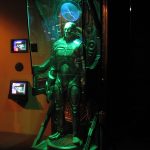Ruth E. Walker
Writers discover their stories in so many ways that it isn’t possible to list them all. An overheard conversation, an article in a newspaper, a name on a gravestone, a lived experience, a visual prompt, a first line in a writing exercise…the path to the writer’s muse can appear and take hold without warning. And suddenly–KAPOW!–the pen cannot be stopped until the tale is told.
And sometimes a writer is given the gift of a story. Heather M. O’Connor, a longtime friend of ours at Writescape, received such a gift a few years ago. The result? A timeless and beautiful book that belongs on everyone’s bookshelf.
I asked Heather a few questions about her new book and where it came from. Heather is a natural storyteller but this story wasn’t hers to tell. At least, not hers alone.
Where did you discover this story?
It all started when Ontario Parks asked me to write a blog post about the Ojibwe Horse. I’ve always been a horse-lover, so they had me at “horses.” But when they said, “nobody knows about them”, I knew it would be something really special.
And it was. The Ojibwe Horse is an endangered semi-feral breed of horses that once lived in harmony with the Ojibwe people. The last four survivors were rescued from extinction, and spirited to safety. It had all the elements of a good story, even a happily-ever-after homecoming.

I finished the blog post, but the horses wouldn’t let me go. This wasn’t just a cool story. It was an important piece of Indigenous history. So I applied for a Marion Hebb Research Grant from Access Copyright and travelled up to Quetico Provincial Park to meet the horses for myself.
That’s where I met Darcy. As they say in Casablanca, “it was the beginning of a beautiful friendship.”
Why didn’t anyone else write this story? In other words, why did Darcy Whitecrow and Heather O’Connor decide to write this book now?

photo credit Ontario Parks
That’s a good question. Darcy is Ojibwe. He started an equine program at Seine River First Nation to help the youth in his community get in touch with their traditional heritage. But it’s just one ranch in one First Nation community. And I thought, there’s only so much Darcy to go around. What about all the other kids? How will they learn about this proud piece of their heritage?
And I wanted to help Darcy spread the word about the horses and the important work he’s doing. There are only about 150 left, and caring for them is very expensive. I couldn’t breed them or train them. But I could help Darcy’s words travel farther.
How difficult was it to write the book? Co-writing is not straightforward and you have a strong narrative voice of your own – did you have to decide on how best to get the story down on paper, writing as a team?
I actually went to Quetico planning to write a middle grade novel about a ranch. But I couldn’t get Darcy’s voice out of my head. He’s a born storyteller.
So I came up with the frame for the story — a grandfather teaching his granddaughter the history of the horses. But the history? That’s all Darcy — sometimes verbatim. And one line comes from an oral history we received from his friend Mike Ottertail.
The oral tradition is very strong in Darcy’s culture. Essentially, he taught me the story until I could tell it myself, very much like the grandfather in the book.
Was it a challenge to find a publisher – the right publisher – to publish this book?
It wasn’t, actually.
Second Story Press was creating these beautifully illustrated dual-language picture books. I’d read a couple — Missing Nimama and Stolen Words, both written by Melanie Florence. They were wistful intergenerational stories about culture and loss, themes that run through Runs with the Stars, too.
When I noticed that Katherine Cole, Second Story’s editor at the time, was doing blue pencil sessions at CANSCAIP’s [Canadian Society of Children’s Authors, Illustrators and Performers] Packaging Your Imagination Conference, I signed up to see her. She loved the manuscript.
Where did the title come from?

Wiijibibamatoon-Anangoonan (Runs with the Stars) is the Ojibwe name given to the foal born at the end of the story. All Ojibwe Horses receive an Ojibwe name to honour their heritage.
Who is the ideal reader for this book?

Runs with the Stars is aimed at kids aged 3-8. But it could also be used to teach Indigenous history in classrooms up to Grade 6. After all, who doesn’t love a good horse story?
What hopes and dreams do you have for “Runs With the Stars”?
This is Indigenous history, so I hope it’s read in First Nation classrooms and used in traditional language programs. I’d love to see elders sharing it with kids, and kids reading it to parents who maybe lost their language in residential schools. I hope it stirs memories and starts conversations.
Anything you’d like to add?

If you’d like to meet two Ojibwe Horses, come to Abbey Gardens in Haliburton on Saturday, June 18. They’re holding a big family event with a book signing. Stay posted for the details.
I’m also having a horsey-themed book launch at Blue Heron Books in Uxbridge on April 30 10:00 to 11:30 a.m. I’d love to see you there!
Where can we purchase the book?
Runs with the Stars and Wiijibibamatoon-Anangoonan come out May 3. They’re both available for pre-order at your favourite independent bookseller.

Heather M. O’Connor is an award-winning freelance writer, editor and author. Her first picture book Fast Friends, illustrated by Claudia Dávila, was published by Scholastic Canada in 2020. Betting Game, her debut novel with Orca Books, was published in 2015. She also writes short stories, fantasy and historical fiction. Heather lives in Peterborough, Ontario.
Blog feature image: Ontario Parks




 1. When David Leviathan wrote
1. When David Leviathan wrote  For worse- It’s still a little difficult to write an LGBTQ story and not have the expectation that it will include one or all of the following: Romance, Sex, Erotica. But, our stories do not need to have a tunnel-vision focus on sexuality and love life. I came face to face with this frustration recently during a #PitMad event on Twitter. I wrote a literary novel with LGBTQ characters. I had a few likes, but they were all from publishers who only publish gay romance with degrees of sex. I even tagged the novel as literary. They are not yet looking for gay novels that don’t include these things.
For worse- It’s still a little difficult to write an LGBTQ story and not have the expectation that it will include one or all of the following: Romance, Sex, Erotica. But, our stories do not need to have a tunnel-vision focus on sexuality and love life. I came face to face with this frustration recently during a #PitMad event on Twitter. I wrote a literary novel with LGBTQ characters. I had a few likes, but they were all from publishers who only publish gay romance with degrees of sex. I even tagged the novel as literary. They are not yet looking for gay novels that don’t include these things.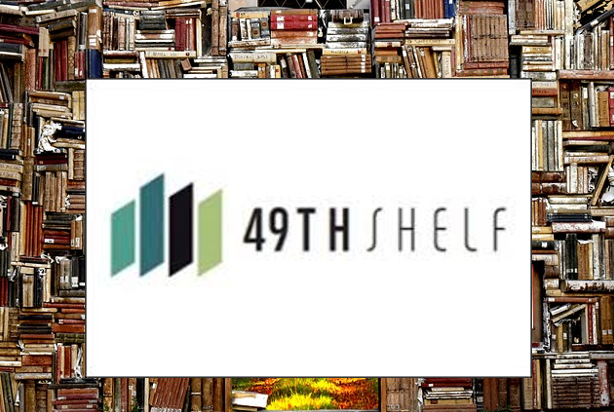 To mark Pride Month, why not add a Canadian LGBTQ novel to your reading list. Read a book by Kevin Craig or choose one from
To mark Pride Month, why not add a Canadian LGBTQ novel to your reading list. Read a book by Kevin Craig or choose one from 
 Rather than complain about Canadian books and authors often being overshadowed in the marketplace by the sheer volume of books from the US, a community of Canadian publishers of all sizes, across the country, got together and created this site.
Rather than complain about Canadian books and authors often being overshadowed in the marketplace by the sheer volume of books from the US, a community of Canadian publishers of all sizes, across the country, got together and created this site.
 #NationalWalkoutDay, where school children and teachers across the US protested gun violence by walking out of their schools for 17 minutes this morning – part of a larger, powerful movement organized by kids – inspired us to share this list with you. The books are all about recognizing injustice, finding ways to fight it, being inspired by real-life heroes, and becoming powerful in important new ways.
#NationalWalkoutDay, where school children and teachers across the US protested gun violence by walking out of their schools for 17 minutes this morning – part of a larger, powerful movement organized by kids – inspired us to share this list with you. The books are all about recognizing injustice, finding ways to fight it, being inspired by real-life heroes, and becoming powerful in important new ways.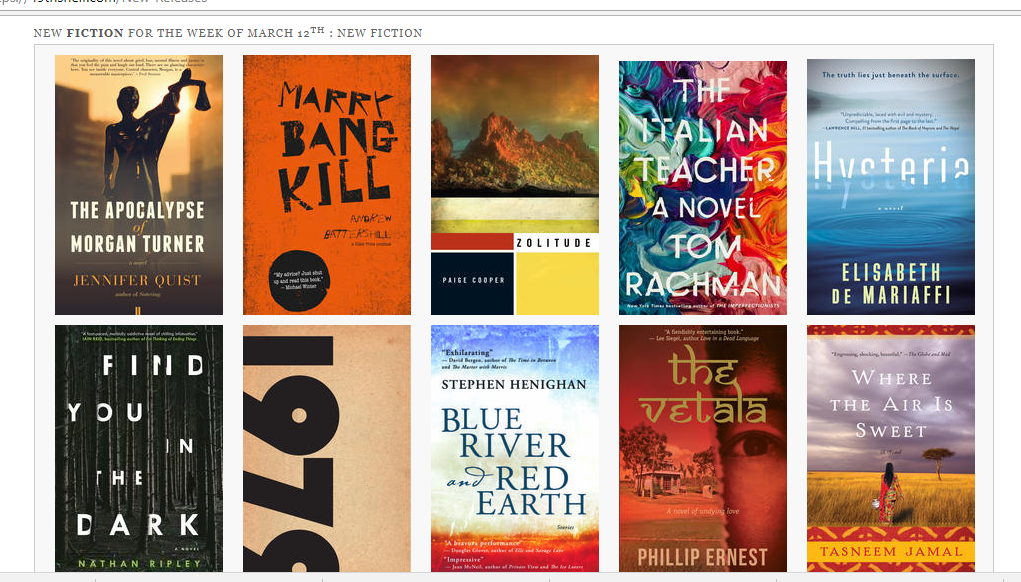
 Can I sell my book or buy books on 49thShelf.com?
Can I sell my book or buy books on 49thShelf.com? Gwynn recently interviewed Beth Bruder, Vice President at Dundurn Press and a founding member and chair of the ACP committee that launched The 49th Shelf. Listen to that interview on
Gwynn recently interviewed Beth Bruder, Vice President at Dundurn Press and a founding member and chair of the ACP committee that launched The 49th Shelf. Listen to that interview on 

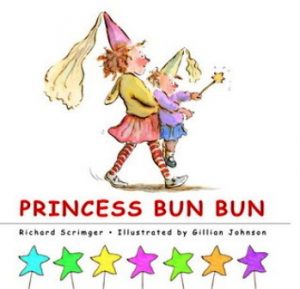




 In just ten years, Vicki (also writing as Eva Gates) has more than 20 crime and mystery novels to her credit .
In just ten years, Vicki (also writing as Eva Gates) has more than 20 crime and mystery novels to her credit . Mystery novels really do fill the spectrum from light and fluffy to very dark indeed. Something for everyone in fact. Darker crime novels, such as psychological suspense, show the human psyche under pressure.
Mystery novels really do fill the spectrum from light and fluffy to very dark indeed. Something for everyone in fact. Darker crime novels, such as psychological suspense, show the human psyche under pressure. At the moment, I’m writing mostly cozy books. Cozies are all about friends and family and community. The tone is much lighter, there is never any real danger to the main characters, and not much in the way of tragedy or angst. Sometimes a little dash of romance, but the friendships are all important. People love these books because they come to love the characters and the town they live in. And the food. Food and books are often important in cozy novels.
At the moment, I’m writing mostly cozy books. Cozies are all about friends and family and community. The tone is much lighter, there is never any real danger to the main characters, and not much in the way of tragedy or angst. Sometimes a little dash of romance, but the friendships are all important. People love these books because they come to love the characters and the town they live in. And the food. Food and books are often important in cozy novels.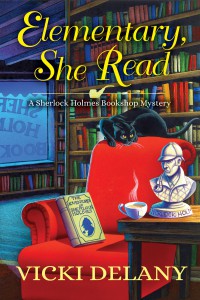 The hig
The hig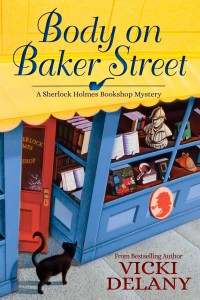 hly perceptive Gemma is the police’s first suspect, so she puts her consummate powers of deduction to work to clear her name, investigating a handsome rare books expert, the dead woman’s suspiciously unmoved son, and a whole family of greedy characters desperate to cash in on their inheritance.
hly perceptive Gemma is the police’s first suspect, so she puts her consummate powers of deduction to work to clear her name, investigating a handsome rare books expert, the dead woman’s suspiciously unmoved son, and a whole family of greedy characters desperate to cash in on their inheritance. Then it’s time to start to write. I walk into the dining room and stand at my Netbook computer which is on the half-wall between the kitchen and the dining room. As I pass through the kitchen, I put one egg on to boil. (In the summer, I might sit outside on the deck). I always write, standing up, on the Netbook. I read over everything I did the previous day, doing a light edit as I go. I then take my egg into the study and eat it while checking email.
Then it’s time to start to write. I walk into the dining room and stand at my Netbook computer which is on the half-wall between the kitchen and the dining room. As I pass through the kitchen, I put one egg on to boil. (In the summer, I might sit outside on the deck). I always write, standing up, on the Netbook. I read over everything I did the previous day, doing a light edit as I go. I then take my egg into the study and eat it while checking email.









